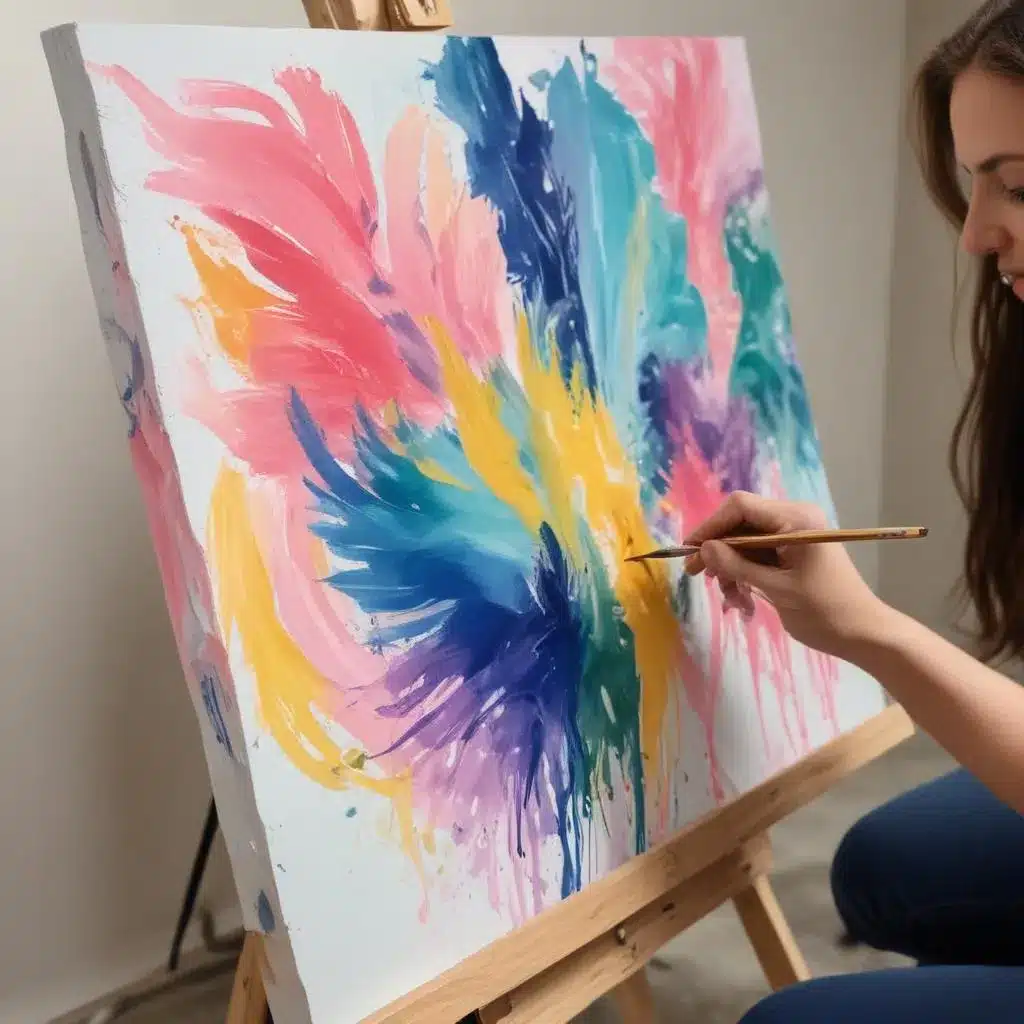
Art is a powerful means of self-expression, allowing us to tap into the depths of our emotions and channel them onto the canvas. For many artists, the intuitive painting process is a transformative journey, blending technical skill with the raw energy of the subconscious. By embracing this approach, we can unlock new realms of creative potential and uncover profound insights about ourselves.
Now, this might seem counterintuitive…
Unveiling the Intuitive Painting Process
The intuitive painting method is characterized by a spontaneous and instinctive approach, where the artist allows their emotions and inner vision to guide the brushstrokes, rather than adhering to a pre-determined plan. This style of painting is often described as a meditative practice, where the artist enters a state of flow and becomes deeply immersed in the present moment.
As Elisabeth Vismans explains, “When you paint fast, you don’t have much time to think, and that’s a good thing. Well, in painting at least, because you work more with the unconscious mind. When you are in that state of mind, we call it the zone, you work intuitively.”
By surrendering control and trusting the creative impulse, intuitive painters can tap into a wellspring of emotion and uncover unexpected visual narratives. This approach resonates with the words of artist Joan Pañell Fernández de Liencres, who describes his process as “a form of communication and self-expression. I’ve always struggled to articulate my emotions, and art serves as my voice, allowing me to share my inner world with others.”
Channeling Emotions through Color and Texture
One of the hallmarks of intuitive painting is the use of bold, expressive colors and dynamic brushstrokes to convey the artist’s emotional state. As Stephanie MacKenzie notes, “Each piece contains a fragment of my essence. Some critics have claimed that a child could replicate my work, but I see this as a compliment. It means I’ve succeeded in transcending traditional boundaries and accessing the unfiltered honesty of childhood creativity.”
The interplay of color, texture, and movement becomes a visual language, allowing the artist to translate their inner experiences onto the canvas. As Vismans explains, “Color is energy. You are energy. I am energy. The canvas is matter, made up of billions of tiny atoms. By channeling energy and putting it onto matter, we’re able to see the unseen. To know, the unknown.”
By embracing the spontaneity of the intuitive painting process, artists can tap into a deep well of emotion and let it flow through their brushstrokes. This allows for a cathartic and transformative experience, as the act of painting becomes a form of self-discovery and emotional release.
Harnessing the Power of Intuition
The intuitive approach to painting is not merely about creating beautiful artworks; it is a profound journey of self-exploration and personal growth. As Haley from The Sparkling Hippie explains, “When I paint, I am so totally encapsulated with the moment in front of me, I move myself out of the way and let the paint flow through me. When capturing the purpose of your time here on earth, as I do in a commissioned Purpose Painting, I first have a heart to heart with you. After which I call in the intention for what you are seeking guidance on. This sets the tone for the canvas.”
By allowing the intuition to guide the creative process, artists can tap into a higher level of self-awareness and uncover hidden aspects of their psyche. The act of painting becomes a form of meditation, where the artist is fully present and in tune with their emotions and inner wisdom.
This intuitive approach is not limited to painting; it can be applied to various artistic disciplines, from pencil sketching and mixed media to digital art and performance art. By embracing the power of intuition, artists can unlock new realms of creative expression and deepen their understanding of themselves and the world around them.
Practical Tips for Intuitive Painting
If you’re interested in exploring the intuitive painting process, here are some practical tips to get you started:
-
Let Go of Control: Embrace the spontaneity of the moment and trust your instincts. Don’t try to control the outcome; instead, allow the painting to unfold organically.
-
Experiment with Materials: Experiment with a variety of painting mediums, such as acrylics, oils, or watercolors, as well as unconventional tools like palette knives, sponges, or even your hands. This can help you discover new ways of expressing your emotions.
-
Focus on Feeling, Not Technique: Instead of worrying about technical perfection, focus on channeling your emotions through the painting process. Let the paint guide you, rather than trying to force a specific outcome.
-
Practice Regularly: Intuitive painting is a skill that can be developed over time. Set aside dedicated time to paint regularly, and don’t be afraid to explore and experiment.
-
Embrace Imperfection: Remember that the beauty of intuitive painting lies in its rawness and authenticity. Embrace the imperfections and unexpected moments that arise during the creative process.
By embracing the intuitive painting approach, you can unlock a deep well of creative potential and uncover profound insights about yourself. As you journey through this process, remember that the act of painting is not just about the final product, but the transformative experience of tapping into your emotions and letting them flow freely through the brushstrokes.
To explore more creative techniques and artistic inspiration, be sure to visit Pencil and Paint Muse – a hub of information for emerging artists and art enthusiasts alike.
Example: Modern Abstract Painting Series 2024